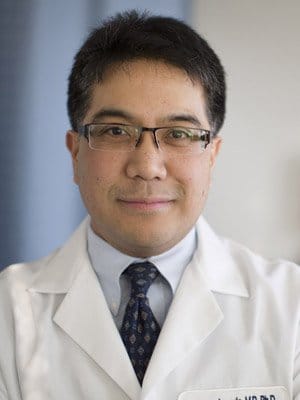
The GW Medical Faculty Associates
2150 Pennsylvania Ave, NW
10-410
Washington, DC 20037

More Special Articles
Varicose Veins vs. Spider Veins What Are the Differences?
Varicose and spider veins are often mistaken as one and the same by many patients. Though similar in their causes, varicose and spider veins differ in appearance, symptoms, and treatment.
Properly functioning veins return blood to the heart, but when a valve does not function properly, it causes blood to flow backwards down the vein. This backward flow, known as chronic venous insufficiency (CVI), often causes varicose veins, which appear as bulging, bluish ropes beneath the surface of the skin on the legs.
In addition to the unsightly appearance on the legs, many patients with varicose veins experience physical symptoms including
Leg discomfort, aching, pain, and swelling
Leg itching, tingling, and numbness
Leg heaviness and fatigue
Painful leg ulcers in more extr-
eme cases
Spider veins, on the other hand, are smaller red or purple veins that have a spider web-like appearance. These veins usually do not produce symptoms.
Approximately 30 to 50 percent of adults in the U.S. suffer from varicose and spider veins. Contributing factors that put you at risk of developing varicose veins
Age The risk of varicose veins increases with age
Heredity A positive family history of varicose veins increases your risk
Gender Women are three times more likely to develop varicose veins than men
Hormones Hormonal changes related to pregnancy and menopause
Lifestyle Standing for long periods increases your risk of varicose veins
Excess weight or obesity
Successful treatment of varicose and spider veins first requires the treatment of CVI if present. Because a significant percentage of patients with varicose and spider veins have CVI, a duplex ultrasound exam is often the first step for diagnosis and treatment. After the cause of your varicose or spider veins is identified, a properly trained vein specialist, such as a board-certified vascular surgeon, can create the proper treatment plan for you.
The gold-standard treatments for varicose and spider veins include
Compression Therapy Compression stockings relieve the physical symptoms of varicose veins.
Sclerotherapy The most common treatment for small varicose veins and spider veins. Sclerotherapy involves the injection of medication into your diseased vein, which acts on the lining of the vein to cause it to seal shut, eliminating the vein completely. To achieve long-term results, any underlying CVI should be treated prior to sclerotherapy.
Endovenous Laser Ablation Therapy (EVLT) A minimally-invasive, in-office, laser procedure that treats CVI and is covered by most insurance plans. During this procedure, a trained vascular surgeon inserts a thin laser fiber into your diseased vein. The laser energy closes the diseased vein and redirects the blood flow to your other healthy veins. There is little to no downtime following treatment.
Phlebectomy A minimally invasive office procedure in which your diseased vein is removed through a series of small stitch-free incisions.
If unsightly varicose or spider veins are present on your legs, schedule a vein assessment with a board-certified vascular surgeon for proper diagnosis and to learn which treatment is best for you.
Other Articles You May Find of Interest...
- What To Expect From a Holistic Veterinary Hospital Visit
- Making Your New Year’s Resolution Stick
- Save the Earth, Stop Urinary Incontinence
- Common Questions When Downsizing Your Home
- Overcoming Your Addiction
- ED Medications Don’t Work? Get a Penile Duplex Ultrasound
- Are You an IT Guy? You May Be Suffering From "IT Prostatitis"

















